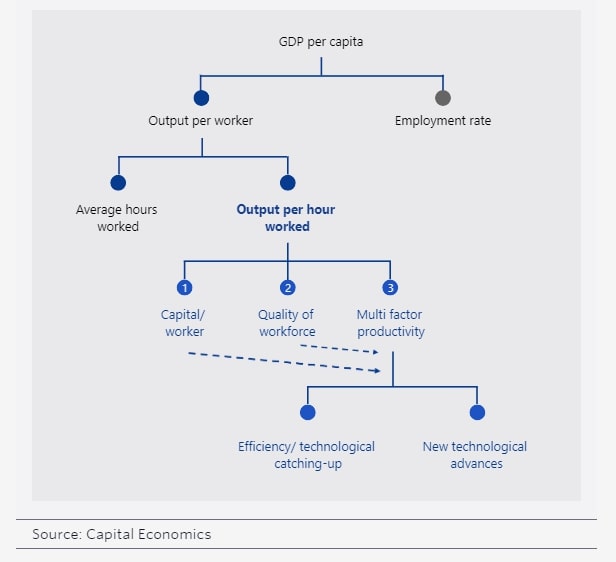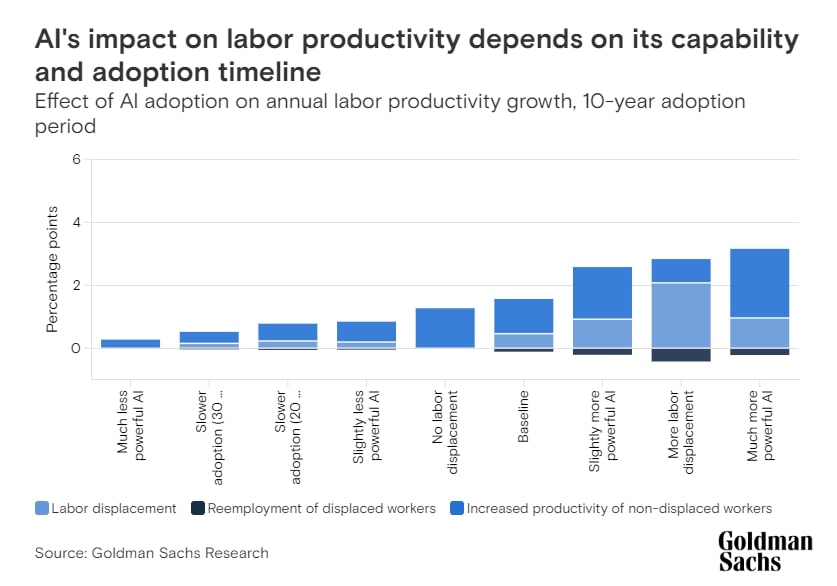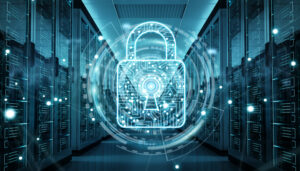
Is AI As Transformative As The Steam Engine And The Internet?
The widespread adoption of artificial intelligence (AI) has the potential to significantly increase productivity in various industries and economies around the world.
In a recent Capital Economics survey, nearly 80% of customers responded that AI will transform the global economy.
How will this happen and how quickly can the productivity gains be?
Could AI systems replace humans on a scale that leads to mass unemployment, or will they promote job growth?
Key findings
- AI could be a paradigm shift, similar to the internal combustion engine, the steam engine, electricity, and the ICT revolution.
- Adoption can result in shorter adoption delays and higher annual productivity growth rates.
- Previous “ general-purpose technology ” revolutions have broadly impacted labor markets, leading to new, better-paying positions and a direct increase in AI-related employment.
- Think “ decades, not years ” for the time needed to fully realize the benefits, likely in the late 2020s and 2030s.
The consequences of technological revolutions
Artificial intelligence can be viewed as a general-purpose technology (GPT) that has had great economic effects in the past.
Examples of this are:
- the invention of the internal combustion engine in the late 1800s;
- the development of the steam engine in the United Kingdom in the 1700s and 1800s, which made the Industrial Revolution possible;
- the introduction of electricity in the United States in the early 1900s;
- The information and communications technology (ICT) revolution in the late 1900s significantly changed economies by increasing productivity.
While it has historically taken decades for GPTs to produce noticeable productivity gains, the period for countries to adopt new technology after its invention has shortened.
In the United Kingdom and the United States, annual productivity growth since the introduction of steam engines and electricity has averaged 0.2%-0.3%.
This was partly because the profits were made over a long period of time. But the improvements have compounded along with delays in the transition.
Between 1995 and 2005, the United States recorded annual productivity growth of 1.5 percentage points, notes Capital Economics in its AI, Economies and Markets report.
The advent of previous GPT revolutions has typically had a positive impact on labor markets.
In the short term, there were significant friction losses due to technological progress. However, workers have tended to move to new, better-paying jobs.
This is because GPTs have either increased demand for certain goods or services or created entirely new sectors of the economy.
There will likely be a direct boost to AI-related jobs as well as an overall increase in employment and real wages as productivity growth drives aggregate demand.
According to a recent MIT study, 60% of workers in the United States work in jobs that did not exist in 1940.
This means that more than 85% of job growth over the past 80 years has come from technology-driven job creation, according to Goldman Sachs analysis.
Changes in business operations driven by advances in artificial intelligence could expose the equivalent of 300 million full-time jobs to automation, Goldman research suggests.
But not all automation will involve layoffs, as most jobs are likely to be “ supplemented rather than replaced by AI . ”
What does this mean for AI-driven productivity?
How AI could increase global productivity
There are several ways AI applications can transform the productivity of workers around the world.

Efficiency savings
Companies could make do with fewer resources or do more with the resources they do have.
AI could directly replace humans by carrying out tasks more efficiently or by helping people become more productive and free up time for other activities.
AI could also free up other resources. For example, the use of shared driverless cars could enable areas previously used for parking spaces to be repurposed for more productive purposes.
Increasing output
AI can increase output per hour of work in three different ways:
- Increasing capital input per employee, e.g. B. through the use of new AI software or the possibility of preventative maintenance of the systems to slow down the depreciation of the assets.
- Improving the quality of the workforce.
- Increasing the efficiency with which human resources and capital are combined to enable better work practices.
Technological progress
AI can be used to promote new inventions.
AI can filter vast amounts of research results to propose the most realistic projects and predict the results of real-world experiments.
This could boost innovation and lead to breakthroughs in a wide range of areas, from drug discovery to education to transport.
It could permanently increase productivity growth and create a virtuous cycle in which AI trains itself to increase innovation.
Quantifying the impact of AI
According to analysts at Capital Economics, AI has the potential for major benefits, but like previous technological revolutions, these are likely to be realized only gradually.
“ We believe that the impact of previous technological advances is the best guide to the likely impact of AI in the coming years, and given the nature of AI, the ICT revolution is arguably the most appropriate example for such consideration. Data shows that productivity gains during the ICT revolution in the US reached 1.5% per year. So this seems to be a reasonable indication of what is achievable for a country at the forefront of the development and deployment of the technology. “
This could end the productivity slowdown in developed economies over the last 10-20 years.
The gains could be greater because many applications created during the digital revolution focused on improving consumer experiences, while AI offers more business uses that directly increase productivity, analysts said.
Similarly, Goldman Sachs research estimates that AI tools could boost productivity growth by 1.5 percentage points over 10 years and drive a 7% (or nearly $7 trillion) increase in global gross domestic product (GDP).
More powerful AI development could lead to productivity growth of more than 3 percentage points, with a workforce displacement of about 1 point.

Obstacles to AI-driven productivity growth
AI could be a game-changer, but the realized gains are significantly different from the theoretical gains.
Historically, the most significant productivity gains have occurred when technological advances coincided with political and/or social upheaval or with the development of complementary innovations, notes Capital Economics.
There are several obstacles to overcome as companies must figure out how to best use the technology, find the resources to implement it, and navigate institutional barriers.
They also need to hire enough skilled workers to implement the technology.
Just as optimal use of the Internet requires the development of cloud computing and large databases, new technologies must also be created to best use AI.
To use AI, companies have to do more than just install or connect software. You need supporting skills such as databases, data management systems, and IT specialists.
Finally, they must make significant organizational and procedural changes.
The barriers to the introduction of new technologies are both internal, which a company can influence, and external, which it cannot directly control.
The main internal hurdle is likely to be cost, particularly in the short term, while regulatory uncertainty could be the main external barrier.
Governments may restrict the use of AI, and organizations face costs arising from data security and privacy regulations.
All of these factors mean that a productivity boost is not imminent in the next few years. It might not come to fruition until the late 2020s or early 2030s.
However, the growth potential also comes with a caveat: the fields that AI can potentially fully automate are not perfect replacements for those for which it cannot.
So if part of the economy becomes increasingly automated, the essential but non-automated, less productive part of the economy would increase as a share of GDP, limiting overall growth.
And just as the ICT revolution primarily increased productivity in the US but less so in the Eurozone, productivity gains from AI are far from guaranteed and will depend on whether countries have the factors necessary to use it effectively, according to Capital Economics.
Conclusion
The pace of AI adoption and its impact on workplace productivity depends on more than just technical feasibility.
AI is likely to deliver a significant boost to productivity when several factors come together, including investment, workforce retraining and a balanced regulatory system.
As the impact of past GPT-driven revolutions on productivity becomes apparent, AI could lead to an annual increase of 1.5%.
This is more likely to happen in the late 2020s and 2030s than in the next few years.
And the extent to which countries successfully integrate AI into workflows and reap productivity gains will vary widely.

















